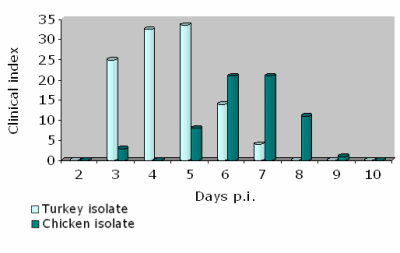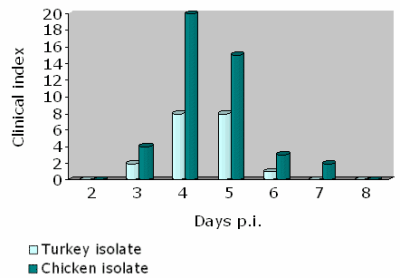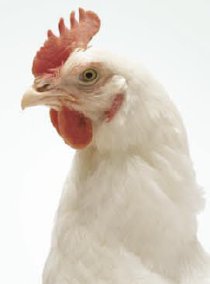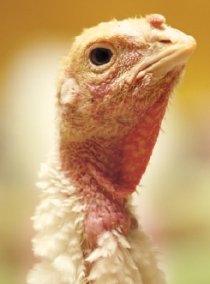Avian Metapneumovirus Classification
Nucleotide sequence analysis and neutralisation tests using specific monoclonal antibodies have identified four subtypes (A, B, C and D) of avian metapneumovirus.
Subtypes
Four Avian Metapneumovirus subtypes (A, B, C and D) have been identified. Subtypes A and B are present in Europe and many other parts of the world, they account for the great majority of aMPV detections.
Subtype C is the only subtype so far to have been reported in the United States, where it causes disease, but only in turkeys. The only other countries where subtype C has been reported are France (in ducks) and Korea (in pheasants). Subtype D has so far only been reported in France.
Reports from Europe have stated that although different subtypes may be present in an area, one subtype can be predominant. It has also been demonstrated that within subtypes A or B, strains that have predilection for either chickens or turkeys can be recognized. The strain replicates better in the species from which it was originally isolated, suggesting differences in tropism between isolates. These isolates cannot be differentiated serologically but there are differences in biological behaviour between them.
It has been demonstrated that strains of subtype A and B (regardless of whether they were originally isolated from chickens or turkeys) cross-protect in vivo. The same has been demonstrated for their ability to protect against subtype C isolates.
Graph 1 and graph 2 show that strains within subtypes A or B may have predilection for either chickens or turkeys. Differences in their biological behaviour in each species can be seen. The turkey isolate may cause more severe disease and more quickly in turkeys than does the isolate obtained from chickens, whereas the chicken isolate may cause a more marked clinical signs in chickens than in turkeys.

Graph 1: Turkeys challenged with either an isolate obtained from turkeys or one obtained from chickens
Ref: Cook, J.K.A., Kinloch, S. & Ellis, M.M. (1993). In vitro and in vivo studies in chickens and turkeys on strains of turkey rhinotracheitis virus isolated from the two species. Avian Pathology, 22, 157-170.

Graph 2: Chickens challenged with either an isolate obtained from turkeys or one obtained from chickens
Ref: Cook, J.K.A., Kinloch, S. & Ellis, M.M. (1993). In vitro and in vivo studies in chickens and turkeys on strains of turkey rhinotracheitis virus isolated from the two species. Avian Pathology, 22, 157-170.
Differences between the subtypes
Table 1 shows the differences between subtype A and subtype B isolates found using neutralisation tests incorporating monoclonal antibodies. Regardless of the country in which the strain was isolated, subtype A isolates react with all four monoclonal antibodies whereas subtype B isolates react only with monoclonal antibodies 4 and 8.

Ref: Cook, J.K.A., Jones, B.V., Ellis, M.M., Li Jing. & Cavanagh, D. (1993). Antigenic differentiation of strains of turkey rhinotracheitis virus using monoclonal antibodies. Avian Pathology, 22, 257-273.
Table 2 shows the differences between subtype A and subtype B isolates and the Colorado (subtype C) isolate by using neutralising monoclonal antibodies. Subtype A isolates react with all four monoclonal antibodies, subtype B isolates react only with monoclonal antibodies 4 and 8, whereas subtype C does not react with any of these monoclonal.

Ref: Cook, J.K.A., Huggins, M.B., Orbell, S.J. & Senne, D. A. (1999). Preliminary antigenic characterization of an avian pneumovirus isolated from commercial turkeys in Colorado, USA. Avian Pathology, 28, 607-617.
Table 3 shows the cross neutralization titre between different subgroups of the Avian Metapneumovirus using monospecific, polyclonal antisera raised in SPF chickens.
Using polyclonal antisera, it is not possible to differentiate between strains of the A and B subtypes, but there is no cross neutralisation between them and subtype C.

*homologous titre



